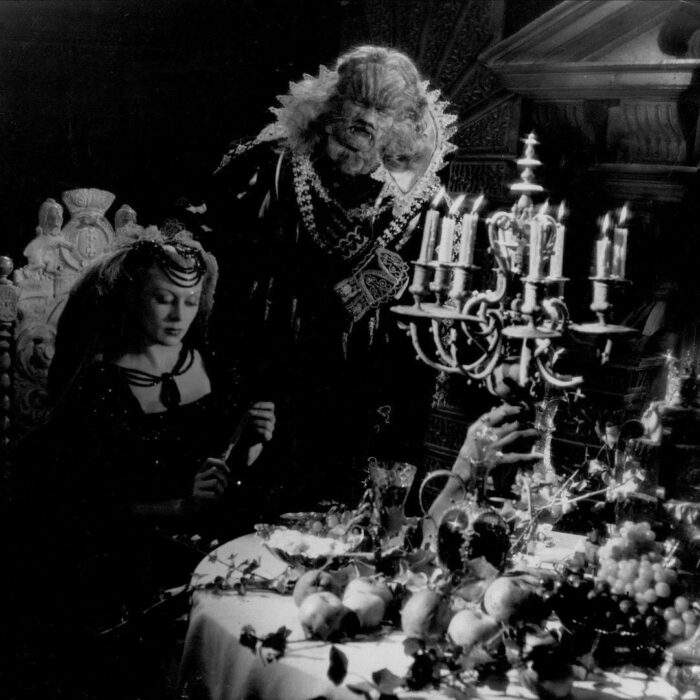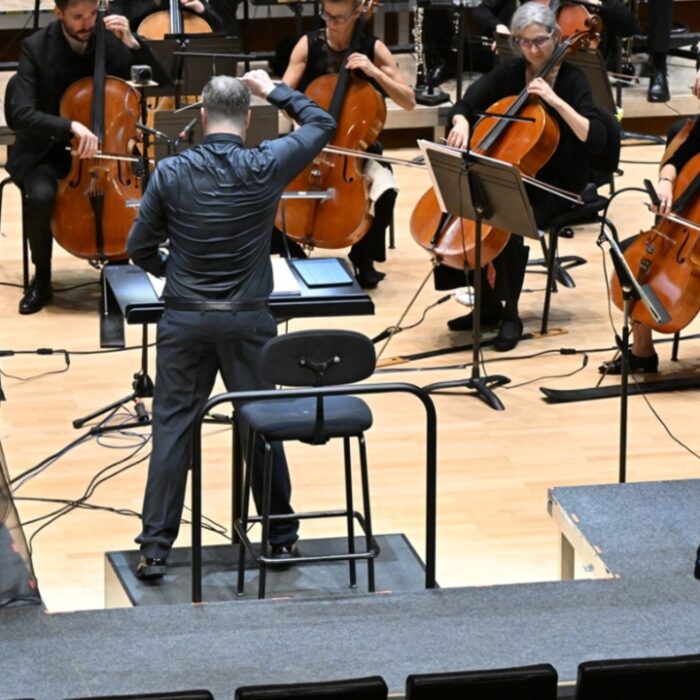
Metropolitan Opera 2025-26 Review: Carmen
Carrie Cracknell’s Revived Production Distorts in Plot Ambiguity & Heavy LED Lighting
By Jennifer Pyron(Photo: Evan Zimmerman)
The Metropolitan Opera’s season premiere of Carrie Cracknell’s revived production of Georges Bizet’s “Carmen” debuted on October 28, 2025 with a stellar cast lineup including Isabel Leonard, Kristina Mkhitaryan, Michael Fabiano, Benjamin Taylor, Scott Conner, Madison Leonard, Briana Hunter, Adam Plachetka, Michael Adams, and Aaron Blake. The original debut of this production took place during the 2023-24 season and OperaWire covered it here.
Since then, there has been a Met Opera live in HD of this production showcasing its original cast and featuring set design close-ups that allow the audience to possibly understand the inner-workings going on that audience members of the live performance in the Met’s hall possibly could not. All of this to say, this production of “Carmen” was confusing and the use of high-power LEDs, projected from the stage and at the audience, detoured one from even wanting to watch what was happening on stage. It hurt.

(Photo: Evan Zimmerman)
Production Details
Act one takes place in “a contemporary American industrial town, outside an arms factory.” The set featured a floor to ceiling wall of semi-opaque plastic privacy screening that came very close to the front of the stage, cramming all cast members at the front and competing with a massive chain-link fence that guarded the plastic wall. There was a feeling of tightness and uncomfortableness while observing the cast interact within the separateness that was very apparently shown on stage. However, this in-your-face example of how borders and walls create tension for humanity was over-the-top and did not allow for one to use their own imagination or even see clearly who was doing what and when from the start. The singers were even difficult to hear at times because of the lack of projection over the bodies in front of them or the constant physical activity that was “happening” on stage. All of this severely took away from Bizet’s “Carmen” as a whole and made it about ambiguous political ideologies instead. This being said, politics and art are inseparable, however, taking away from a composer’s original score to “make politics the focus” drastically undermines an audience’s ability to think for themselves and want to continue thinking about a production after it is over.
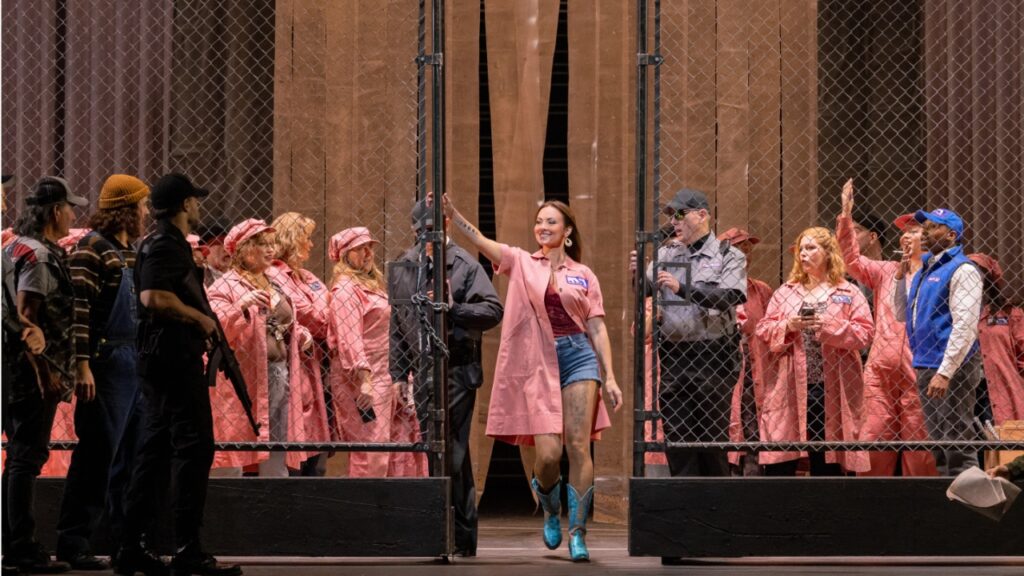
(Photo: Evan Zimmerman)
Act two showcases a life-sized semi-truck and a flat-bed truck on stage. The backdrop consists of strategically spaced LED lights that make it look like stars and cars are flying past as if they are driving very fast down a highway. The concept is contemporary art worthy, however the execution is not. The LED lights detract from being able to comfortably observe what is taking place on stage (I wish I had my sunglasses on!). The cast members looked like shadows at times and their singing was dissolved in the oversized center of the stage focus on the two vehicles. Again, what one may love most about “Carmen” was lost in the ambiguity of trying out everything-everywhere-all-at-once in this production.
Act three features the semi-truck now on its side and a large flame developing from the center of its cavity. The idea is that it crashed on the highway, heading towards the mountains so that the gang of arms dealers can further hide and distribute their goods. The stage lights dimmed to create a sense of unknown around what might happen next and the plot between Carmen and Don José thickens. A fight breaks out between the two and his murderous (yes, he was a known murderer in his hometown army prior to meeting Carmen at the beginning) side comes to light. All of this, may not have been made known to someone new to this opera. In fact, the production’s synopsis took away from this fact greatly, undermining one of the most important aspects of the story–Don José’s mental rot stems from his own festering psychosis and life as a murderer hidden by the uniform he wears while answering his call of duty. The best production I have experienced to date that makes this libretto known is McVicar’s production.
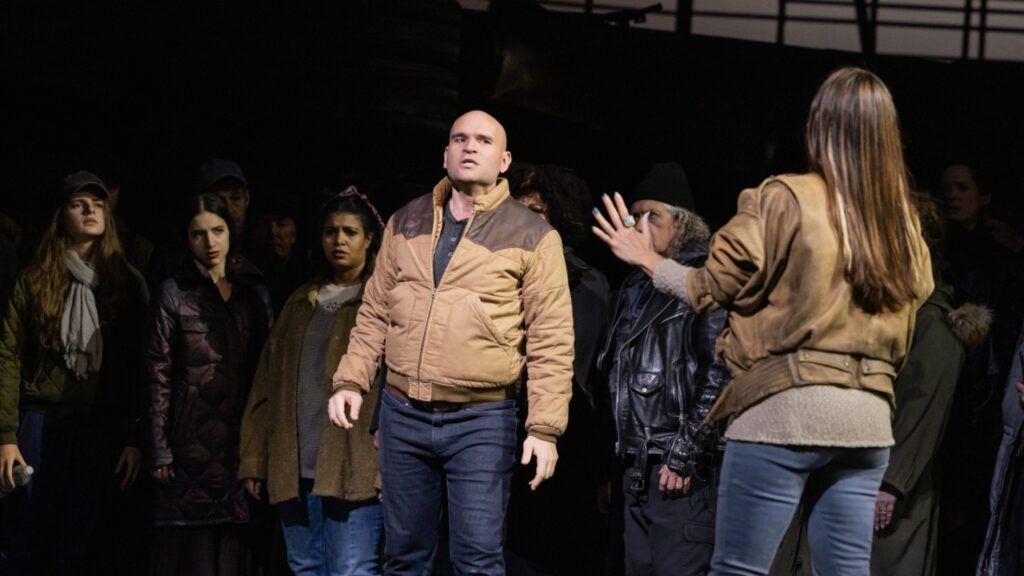
(Photo: Evan Zimmerman)
Act four spirals into, as OperaWire noted in its original coverage of this production, “a clown show.” The LEDs are powered up and the rotating stage creates a dizzying effect as the lights twirl at large in front of the audience. There is no where to look in order to escape the sterility and severity of these lights. There are clowns tossing and twirling in the middle of the stage, depicting a rodeo in which Escamillo is the honored star. The absurdity that is happening drowns out the beauty of Bizet’s composition and one loses touch with what they are even witnessing at this point. Then a fight outside of the arena takes place between Don José (who stalks Carmen from inside the arena to outside) and Carmen who is there to cheer on her new lover, Escamillo. In this production, there is a baseball bat randomly positioned between the side rails of the exterior of the arena that Don José “discovers” and slams into the side of Carmen’s head, killing her instantly. The violent act towards this woman was unhinged, Don José’s murderous ways “win again.” But, I did wonder if anyone who had not seen this opera before understood him to be a known murderer before this incident? Or did they get lost in the ambiguity and assume he was “driven mad by Carmen’s ways?”
Don José begged Carmen to start a new life with him. This production begged the audience to be persuaded by its new plot. How did that work out?
Musical Highlights
Conductor Fabien Gabel made his Met debut with remarkable ease, having conducted several “Carmens” in his career. His dynamics were subtle, making space for singers to take the helm. There were no overtly enthusiastic moments in his musical direction though, and so this felt like it added to the overall ambiguity of the production. The Met Opera orchestra sounded excellent as always, but the direction felt a little lost at times.
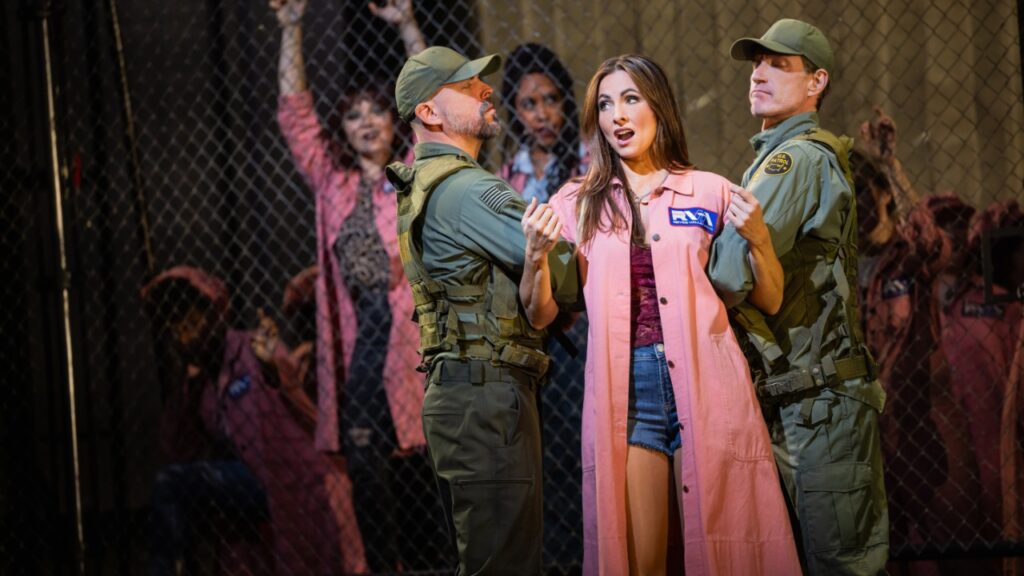
(Photo: Evan Zimmerman)
Isabel Leonard as Carmen was outstanding vocally, but her acting took away from her vocal presence in this production. There was a lot of moving around and keeping up with the increasing pace of the stage direction and strong set designs that made it feel like Leonard was never able to settle into her character and exude her natural and very effortless beauty. Her costume mainly consisted of light-washed denim, a leg tattoo, oversized jacket and large earrings. She was captivating without all of this and in her own way.
Leonard’s voice in her opening aria, “L’amour est un oiseau rebelle” (Habanera), sounded muffled as she weaved in and out of the crowded front stage area, surrounded by people and the chain link fence / plastic privacy screen. The liberating sense of this aria’s composition was lost. Carmen was fighting for space and visibility in this production. Why? For who?
The photo above shows the costuming of the arms guards in this production that prevented Carmen from utilizing the stage area, making it more about their enforcement. Politically speaking, this strikes a predominate cord in regards to our world’s current reality and the history that has continued to support the efforts of mass control to this degree. The production reflecting these times is a hit, however it felt like an overkill of crowded political statements that never fully revealed themselves. Were these ICE agents? Was Carmen being abducted during immigration? Or did she work for the arms dealers and coordinate the perpetual cycle of arms and human trafficking? All of these topics absolutely must be made addressed because they are our own sick reality, but this production’s cramming in of it all felt overwhelming and under-cooked.
Benjamin Taylor as Moralès sounded solid in his role and his opening aria, “Sur la place,” leading into his duet with Micaëla, “Regardez donc cette petite,” featured his vocal technique and magnetic stage presence.
Michael Fabiano as Don José fit his role perfectly. His dumbfounded facial expressions that eventually melted into dark evilness, sadly portrayed a lot of the faces one may see in reports of ICE agents “playing their role” with partial masks barely hiding their black souls sinking behind their own eyes. Fabiano’s acting was perfectly curated to personify all the ways and actions of a murderous man. His vulnerability when Carmen seduced him was met with his violent grasping in desperation for her to love him forever and never leave him. His voice sounded cathartic at times and in other moments, engulfed in rage. His rage however was spurned by true violence and not “passionate love.” This is where the original libretto shines through, however leading up to this revelation one might get misconstrued into thinking he is an innocent falling into the manipulative ways of a wild woman. However he came across, Fabiano really did this role justice and his wasted mind at the end melted into madness as he crumbled to the ground and stared wild-eyed into the audience.
Fabiano’s voice, particularly in his duet with Carmen, “Je vais danser en votre honneur,” was unnerving and ravenous. Already his rage was taking hold and eventually his murdering Carmen would justify it all in his mind’s eye, just like the others he had murdered before…
More Stellar Cast Details
Kristina Mkhitaryan as Micaëla was the highlight of the night! She was “saving grace” personified. Her voice was pure and rich at the same time. Her upper register soared into the Met hall and her dynamics made one sit at the edge of their seat waiting to hear what she would do next. Mkhitaryan’s acting came across as natural and her Micaëla in this distorted plot created clarity and a moral compass. Mkhitaryan represented humanity and all the qualities that make up the complexities of being human. Her initial entrance on stage is something I want to see again. She is immediately accosted by a patrol guard and instead of giving into fear, she resists and stands up straight in her knowing that the treatment she is receiving and will receive from entities such as this is wrong and illegal.
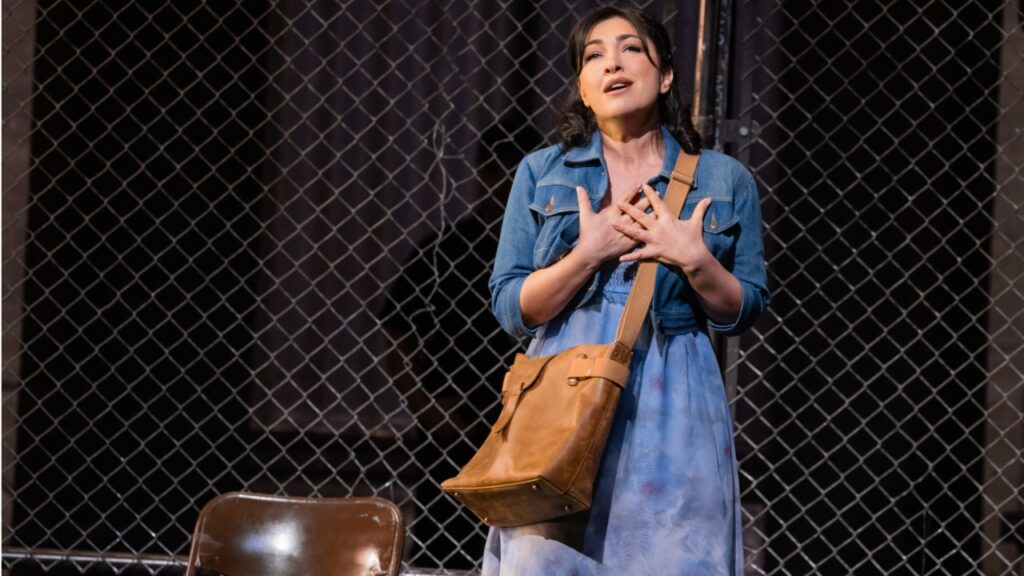
(Photo: Evan Zimmerman)
Mkhitaryan stood tall in the face of her character’s severe circumstances and in every moment, she made her role about standing up for humanity. Yes, the plot describes her delivering messages from Don José’s mother to him and holding pure love for Don José from their childhood, but what Mkhitaryan does is different. She embodies the innocence that is being tormented and stripped of its rights in modern day. She puts the spotlight, in her own way, on what this production’s singular message is all about–empathy cultivates humanity, while apathy destroys all. Her pure heart held all of humanity in this production. She made it so much more.
Her most famous aria, “Je dis que rien m’epouvante,” received a long and well-deserved applause. The audience stood in ovation for her at the curtain call.
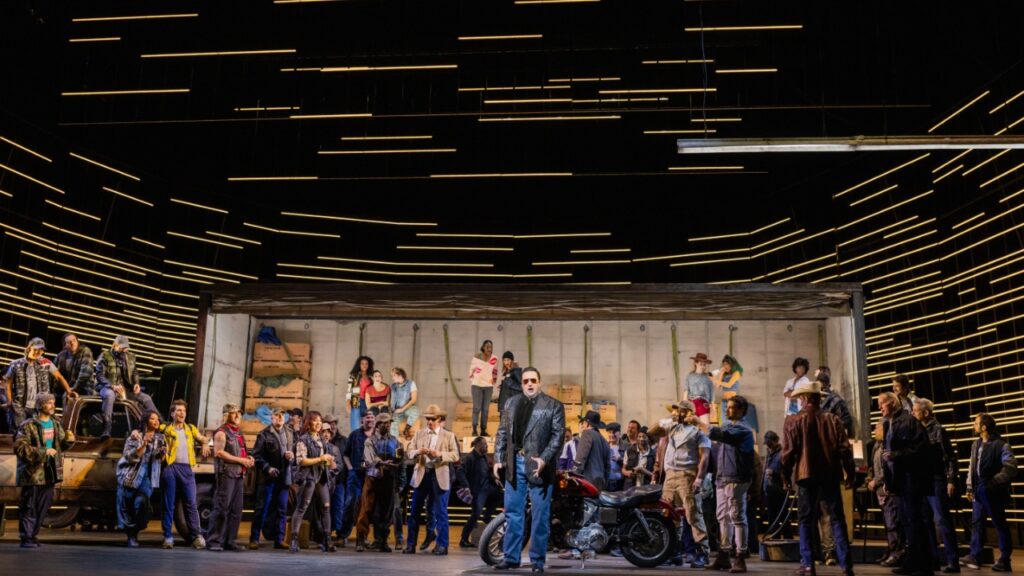
(Photo: Evan Zimmerman)
Adam Plachetka as Escamillo was excellent in his role. (OperaWire reviewed him earlier this month as Leporello in Met opera’s “Don Giovanni“). His voice resonated with brilliance and robustness in the Met’s hall as he celebrated himself as Escamillo. His motorcycle on stage and Carmen posing while he performed was iconic. Plachetka’s performance of his most famous aria, “Votre toast (Toreador Song),” was another major highlight of the night. He radiated in his affection for Carmen and his costuming, constructed by Metropolitan Opera Costume Department and The Costume Shop Chicago, was beautifully ornate in detail. Plachetka is a Met opera legend.
Scott Conner as Zuniga, Madison Leonard (Met debut) as Frasquita, Briana Hunter as Mercédès, Michael Adams as Le Dancaïre and Aaron Blake as Le Remendado made up this illuminating cast of stunning performances. Their voices, along with the Met Opera Chorus, really hit the mark.

(Photo: Evan Zimmerman)

